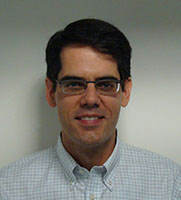Nagle Lecture Series
2014 Nagle Lecture
Charles R. Keeton
A Ray of Light in a Sea of Dark (Matter)
April 3, 2014
Description of the Talk
In the 1930s, Einstein used his theory of relativity to predict that gravity can act like a lens to bend light. Today we see hundreds of cases where the gravity of a distant galaxy distorts our view of a more distant object, creating multiple images or spectacular arcs on the sky. This “gravitational lensing” provides a unique opportunity to study the invisible dark matter thought to surround all galaxies, and even to detect galaxies we cannot otherwise see. The search for invisible galaxies with gravitational lensing will provide important clues about the nature of the exotic substance that pervades the universe. The lecture is aimed at a general audience.
Description of the Speaker

Like other astronomers of his generation, Charles Keeton attributes his interest in space to the success of the Voyager missions and the Space Shuttle program in the 1970s and 1980s. After earning a B.A. from Cornell University and a Ph.D. from Harvard University, Dr. Keeton did research at the University of Arizona and the University of Chicago before joining the faculty of Rutgers University in 2004. Dr. Keeton has observed with the Hubble Space Telescope as well as observatories in Arizona, Hawaii, and Chile. His research has been featured by National Public Radio, MSNBC.com, and New Scientist magazine. In 2010, Dr. Keeton received the Presidential Early Career Award for Scientists and Engineers from President Obama.
The Organizing Committee of the NLS consists of Arthur Danielyan (Co-Chair), Dmitry Khavinson, Milé Krajčevski (Co-Chair), Greg McColm and Razvan Teodorescu. The Committee thanks the USF Department of Mathematics and Statistics and the College of Arts and Sciences for sponsoring this event.